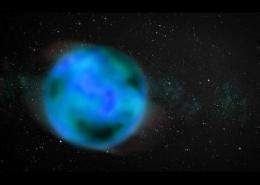Nomads of the galaxy

A recent study proposes the galaxy is crowded with nomad planets adrift in space. If this is the case, nomad planets may play a dynamic role in the universe.
Recently, a study was published in the Monthly Notices of the Royal Astronomical Society proposing planets simply adrift in space may be something of a common phenomenon. Aptly titled "Nomads of the Galaxy," the authors proposed an upper limit to the number of nomad planets that might exist in the Milky Way Galaxy: 100,000 for every star. And because the Milky Way is estimated to have 200 to 400 billion stars, that could put the number of nomad planets in the quadrillions.
If this proposal is correct, it could be that nomad planets play a dynamic role in the universe. In particular, if life can exist without the warmth of a nearby sun, it raises the possibility that, along with sustaining life, nomad planets could be transporting it as well.
While just an idea, it's one that becomes more intriguing when considering not only the number of nomad planets, but the behavior of galaxies
"In the 20th century, many eminent scientists have entertained the speculation that life propagated either in a directed, random or malicious way throughout the galaxy," said Roger D. Blandford, A co-author of the recent study and director of the Kavli Institute for Particle Astrophysics and Cosmology (KIPAC) at Stanford University and the SLAC National Accelerator Laboratory. "One thing that I think modern astronomy might add to that is clear evidence that many galaxies collide and spray material out into intergalactic space. So life can propagate between galaxies too, in principle."
Said Louis E. Strigari, lead author of the study and research associate at KIPAC and the SLAC, "I'm really curious about the exchange of planets between solar systems. How often does it happen, and how far can a nomad planet travel? How many trips around our galaxy does it make? I think these are brand new, basic questions. And I think that's an exciting place to be."
As for whether a nomad planet could actually sustain life, the proof may be here on Earth. "If you imagine the Earth as it is today becoming a nomad planet... life on Earth is not going to cease," said Dimitar D. Sasselov, Professor of Astronomy at Harvard University and the Harvard-Smithsonian Center for Astrophysics, and the Director of the Harvard Origins of Life Initiative. "That we know. It's not even speculation at this point. ...[Scientists] already have identified a large number of microbes and even two types of nematodes that survive entirely on the heat that comes from inside the Earth."
More information: www.kavlifoundation.org/scienc … -kipac-nomads-galaxy
Journal information: Monthly Notices of the Royal Astronomical Society
Provided by The Kavli Foundation




















